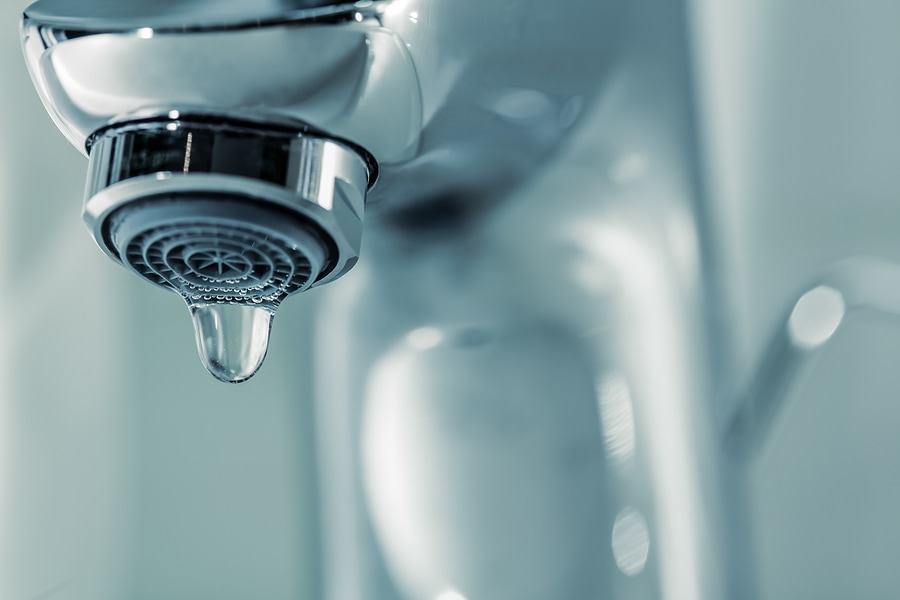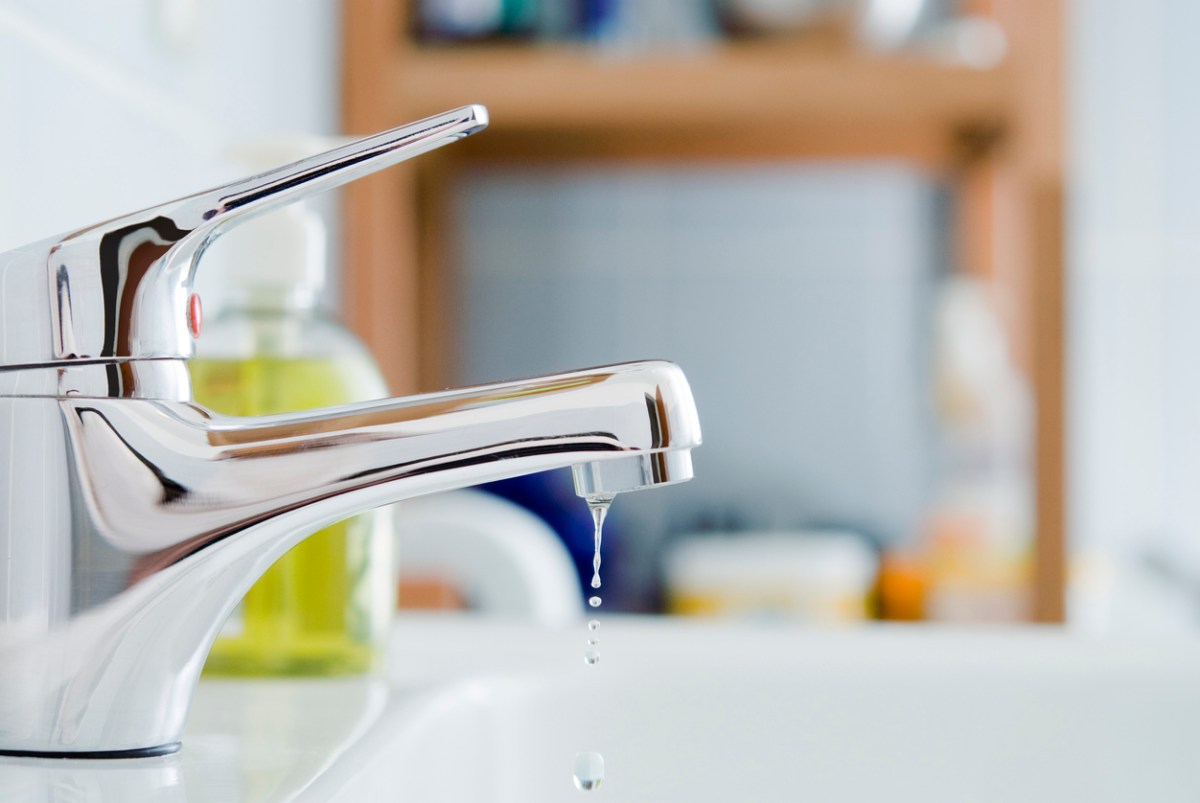Learning the Significance of Correcting a Dripping Faucet
Learning the Significance of Correcting a Dripping Faucet
Blog Article
Are you on the lookout for selective information about Should I Repair or Replace a Leaky Faucet??

Leaking taps might seem like a minor inconvenience, yet their influence surpasses just the inconvenience of the sound. From drainage to incurring unneeded economic costs and health threats, overlooking a dripping faucet can lead to different consequences. In this short article, we'll look into why it's important to address this common home issue immediately and successfully.
Wastefulness of Water
Ecological Effect
Dripping taps add significantly to water wastefulness. According to the Environmental Protection Agency (EPA), a single faucet leaking at one drip per second can squander more than 3,000 gallons of water each year. This not only pressures water sources but additionally affects ecological communities and wild animals based on them.
Financial Prices
Raised Water Bills
Past the environmental effect, trickling faucets can blow up water expenses considerably. The built up wastefulness over time equates into greater energy expenditures, which can have been avoided with timely repair work.
Prospective Home Damages
Additionally, extended leaking can lead to damage to fixtures and surfaces surrounding the tap. Water accumulation can trigger discoloration, rust, and also structural problems if left neglected, causing extra repair expenses.
Wellness Problems
Mold And Mildew and Mold Growth
The constant visibility of wetness from a trickling tap develops a perfect atmosphere for mold and mildew and mildew growth. These fungi not just jeopardize indoor air top quality yet likewise posture health and wellness threats, especially for individuals with breathing problems or allergic reactions.
Waterborne Diseases
Stationary water in leaking faucets can end up being a breeding place for bacteria and various other microorganisms, increasing the danger of waterborne illness. Impurities such as Legionella bacteria thrive in stagnant water, potentially resulting in major ailments when ingested or inhaled.
Do it yourself vs. Expert Repair service
Benefits and drawbacks of DIY Repair Service
While some may try to repair a trickling faucet themselves, do it yourself repair work come with their very own collection of difficulties. Without correct understanding and tools, do it yourself efforts can intensify the concern or lead to insufficient fixings, prolonging the issue.
Advantages of Working With a Professional Plumber
Employing an expert plumber guarantees that the underlying root cause of the trickling tap is addressed effectively. Plumbing technicians have the expertise and equipment to diagnose and fix tap concerns successfully, saving time and decreasing the threat of more damages.
Step-by-Step Guide to Repairing a Dripping Faucet
Devices Needed
Before trying to take care of a dripping tap, gather the necessary devices, including a flexible wrench, screwdrivers, replacement parts (such as washing machines or cartridges), and plumber's tape.
Typical Tap Issues and Their Solutions
Identify the kind of faucet and the specific concern triggering the drip. Common problems include damaged washing machines, rusty valve seats, or damaged O-rings. Describe manufacturer directions or online tutorials for step-by-step advice on repair work.
Safety nets
Normal Maintenance Tips
To avoid trickling taps, perform routine maintenance such as cleaning up aerators, evaluating for leakages, and changing worn-out parts quickly. Furthermore, think about setting up water-saving gadgets or updating to a lot more effective fixtures.
Significance of Prompt Repair Works
Dealing with leaking faucets as quickly as they're seen protects against more water waste and prospective damage, inevitably saving both water and cash over time.
Effect On Residential Property Worth
Perception of Well-Maintained Residential Or Commercial Property
Keeping a property in good condition, consisting of addressing upkeep issues like leaking taps, boosts its viewed worth and desirability among possible buyers or occupants.
Impact on Resale Value
Qualities with well-maintained plumbing fixtures, including taps, command higher resale values in the realty market. Resolving dripping faucets can contribute to a positive perception during residential property examinations and arrangements.
Environmental Obligation
Specific Contribution to Conservation
Taking obligation for fixing dripping taps aligns with more comprehensive efforts toward water conservation and ecological sustainability. Every individual's actions jointly make a substantial influence on protecting precious sources.
Lasting Living Practices
By prioritizing punctual fixings and embracing water-saving habits, people contribute to lasting living practices that benefit both existing and future generations.
Final thought
Addressing a leaking tap goes beyond plain convenience; it's a necessary step toward preserving water, reducing monetary prices, and safeguarding health and property. Whether through DIY repair services or specialist assistance, taking action to deal with trickling taps is a tiny yet impactful means to advertise liable stewardship of sources and add to a much healthier, a lot more lasting future.
How to Fix a Dripping or Leaky Faucet
A leaking faucet is one of the most common problems that homeowners encounter, but it being commonplace doesn’t make it any less annoying. The constant drip drip drip of a leaking bathtub faucet, showerhead, or sink tap can disturb your home’s serenity. Left neglected, a dripping faucet can also result in higher water bills and discoloration or mold growth in your sink or plumbing fixtures.
Fortunately, you don’t have to be a trained plumber to know how to stop a dripping faucet. With some basic tools, replacement parts, and a little patience, leaky faucet repair is a breeze. In this article, we’ll explain what causes dripping faucets and how you can fix them.
What Causes a Leaking Faucet?
Kitchen and bathroom faucets come in all manner of designs, but most involve some combination of valves, O-rings, seals, and washers. The O-ring is usually the weakest link, but any one of these pieces can wear down over time. Heat, moisture, temperature fluctuations, minerals, mold, and movement can contribute to warping and corrosion, breaking the watertight seal. This just comes with the territory of being a homeowner. Everything is always subject to wear and tear, and some component parts of your appliances and fixtures need to be replaced on occasion. At least replacement O-rings are cheap!
More rarely, dripping faucets can be a symptom of excessively high water pressure. Were this the case in your home, you would probably notice that the leak is not isolated to one faucet. Water pressure issues are harder to resolve on your own. We recommend contacting a professional plumber if you suspect your water pressure is too high.
How to Fix a Dripping Faucet
Pipe wrench or monkey wrench Allen wrench set Screwdrivers Old towel or rag Shut off the water.
Before you do anything, you need to turn off the water to keep from drenching your kitchen or bathroom. You should find a valve under the sink and against the wall. Once you’ve turned this valve, try turning the faucet on to confirm that the water source has been cut off.
If you can’t locate your local valve for the faucet you’re working on, you can always shut off the water to the house at the main valve. Of course, this will prohibit anyone from using the sinks, showers, or toilets while you’re working on the faucet that’s giving you trouble.
Plug or block the drain.
You’ll be disassembling the faucet and removing some small bits of hardware. Plug the drain with a stopper or rag to avoid the possibility of a small screw falling into your P-trap.
Take apart the faucet assembly.
There are several varieties of kitchen and bathroom faucets, each with its own manner of assembly. For detailed instructions on how to disassemble your faucet, you can refer to the fixture’s manual or contact the manufacturer. If you know whether you have a ball, disc, cartridge, or compression faucet, you can find detailed schematics online.
In general, you need to begin by removing the faucet handles. You might notice a small screw that you’ll need to remove with a screwdriver or Allen wrench. If you don’t see any visible securing hardware, it’s likely hidden under a decorative cap that can be unscrewed or popped off with flathead screwdriver.
Remove each piece methodically, consulting a schematic when necessary. Take notes or arrange the pieces in such a way to make it easier to correctly reassemble the faucet later.
Remove the cartridge.
Once you’ve removed the handles and securing hardware, you should be able to remove the valve cartridge or stem. Some cartridges will slide right out. Other faucet models will require you to loosen a nut with a pipe wrench before you can remove the valve stem.
Examine the exposed hardware.
With the cartridge or stem removed, inspect the component parts. Check the rubber O-rings for wear and tear. Also examine the seat washer for corrosion or other damage. These pieces are usually the responsible parties for a dripping faucet, but it’s worth inspecting the other component parts while you have the faucet disassembled.
Find replacement parts.
Once you’ve identified which faucet component has failed, find an identical replacement. Your local hardware store should have O-rings, seat washers, and other standard components in stock. If you have a luxury or uncommon faucet, you may have to contact the manufacturer for a replacement part.
It’s a good idea to take your old parts with you to the hardware store so you can compare them with the store’s inventory and be sure you’re purchasing the correct replacement.
Reassemble the faucet.
With your new parts in hand, reconstruct the faucet and handles. Don’t be tempted to overtighten screws or nuts. You might think this could create a better seal, but it can instead damage or bend a delicate part of the assembly and create a new problem for you.
Turn on the water and test the faucet.
The only thing left to do is test your work. Unplug the sink, turn the water back on, and try the faucet. Congratulate yourself on a job well done!
https://www.libertyhomeguard.com/how-to-fix-a-dripping-or-leaky-faucet/

As a devoted person who reads about Why Are My Faucets Dripping (And Can I Fix It Myself)?, I was thinking sharing that piece of content was sensible. Are you aware of another person who is truly interested in the niche? Feel free to promote it. I praise you for your time. Please check our blog back soon.
Report this page